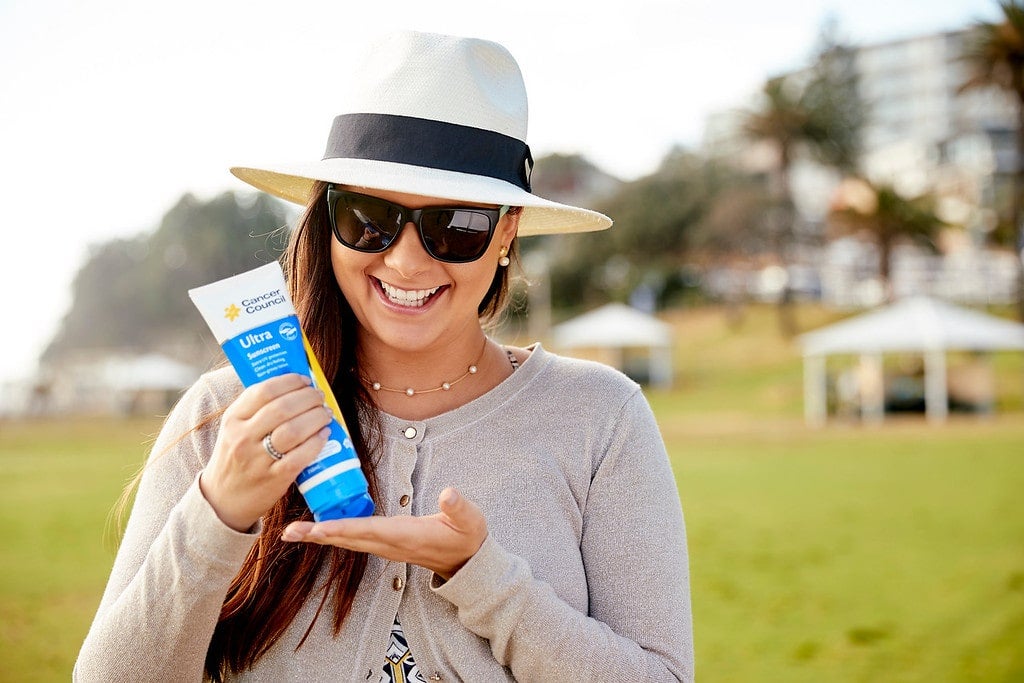Blog
How worried should we be about nanoparticles in sunscreen?
23 May 2012

We have known for more than 30 years that excessive sun exposure increases skin cancer risk.
Research published in 1999 showed that systematic use of sunscreen in an adult Queensland population (the Nambour study) reduced the incidence of squamous cell carcinoma, the second most common form of the disease, by about 40% and in 2003 they showed sunscreen use retarded the growth of solar keratosis. An analysis published in 2011 after longer follow-up of the same study population found sunscreen use helped prevent melanoma.
In 2009, environmental activist organisation, Friends of the Earth (FOE), commenced a campaign raising concerns about the possible adverse effects of the nanoparticles used in some sunscreens. They suggested that micronising metal particles such as zinc oxide and titanium dioxide - useful ingredients of sunscreens seeking to protect against UVA and UVB radiation because they reflect the Ultraviolet (UV) radiation - may allow those ingredients to penetrate bodily organs and so increase cancer risk.
FOE states that: "The long-term health risks of nanoparticles remain poorly understood. The likely exposure in "real life" conditions is also unknown" - but goes on to warn of various possible and serious adverse health effects - largely based on studies in mice.
Data released on Wednesday (8 Feb) by the Australian Government's Department of Industry, Innovation, Science, Research and Tertiary Education suggest that the FOE campaign is having some impact. In a survey of 1000 people, about a third had heard of the possible risks of using sunscreen.
However, the more concerning finding was that rather than switching to a sunscreen that didn't contain nanoparticles, 13% of that group said they were likely to reduce or stop their use of any sunscreen. That translates to 4% of Australians choosing to reduce or stop using sunscreen altogether, a figure that you expect will increase as more Australians see reports in the media highlighting concerns about nanoparticles in sunscreen.
The truth is - no one can say with certainty whether possible adverse health effects due to using nanoparticles in sunscreens are real - but neither can we say with certainty that they don't exist. "Proving a negative" is extremely difficult.
While uncertainty exists, if there is a possibility of any long-term harm, it seems reasonable that sunscreens are labelled as to whether they contain nanoparticles. This at least allows consumers to make their own choice about what they believe and whether to use it or not.
On the balance of available evidence - the research suggesting sunscreen is beneficial in reducing the burden of skin cancer in Australia is very clear and convincing. The research suggesting harm from nanoparticles in sunscreen is, at best, speculative.
It is important to understand that the Nambour study referred to above was conducted in the 1990s - before nanoparticles were a part of sunscreen formulation. So unfortunately that study does not enlighten this debate.
The Australian Therapeutic Goods Administration review in 2009 of this issue concluded that the potential for titanium dioxide and zinc oxide nanoparticles in sunscreens to cause adverse effects depends on the ability of the nanoparticles to reach living skin cells.
So far, the current weight of evidence suggests that titanium dioxide and zinc oxide nanoparticles do not reach living skin cells; rather, they remain on the surface of the skin and in the outer layer of the skin that is composed primarily of dead cells.
A key question is whether people reducing their use of sunscreen would result in more cases of skin cancer. If this is an (inadvertent) outcome of the FOE campaign, it would be tragic and a major setback to cancer prevention efforts.
Cancer Council has led the charge to reduce skin cancer risk in Australia for more than 30 years and has gone as far as influencing the retailing of sun protection products - including sunscreen - by becoming an active part of the industry. But what Cancer Council is about is reducing the burden of cancer in the Australia community. If any credible evidence was available to suggest adverse effects of sunscreen we'd be working hard to ensure all sun protection products were as safe as they can be and we'd be making lots of noise about any such problems.
In circumstances of scientific uncertainty around public health problems, good quality reliable research is the best way to guide our decisions. When that is a slower process than we would all like, sensible and responsible public debate is legitimate and important.
Avoiding hyperbole and scare tactics is wise. To retain our credibility with the community we serve, we must make every effort to give the best possible balanced advice and be as true as we can to the interpretation of the science. After that everyone needs to decide what they believe and make the best choice for themselves and their families.
Tags
